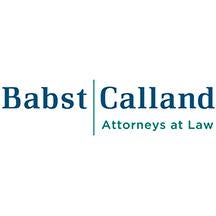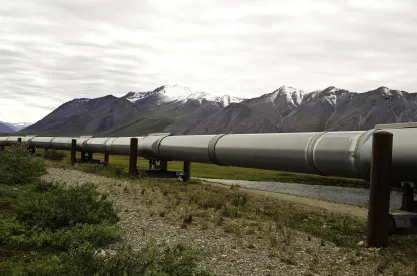On May 5, 2023, the Pipeline and Hazardous Materials Safety Administration (PHMSA) released the pre-publication version of a notice of proposed rulemaking (NPRM) titled “Gas Pipeline Leak Detection and Repair.” PHMSA published the NPRM in response to section 113 of the Protecting our Infrastructure of Pipelines and Enhancing Safety Act of 2020 (PIPES Act). Section 113 of the PIPES Act directed PHMSA to promulgate final regulations by December 27, 2021, requiring operators of gas transmission, distribution pipelines, and certain gathering lines to conduct leak detection and repair programs.
PHMSA proposes to amend 49 CFR Parts 191, 192, and 193 to: increase the frequency of leakage survey and patrolling requirements; introduce leakage survey and repair requirements for liquefied natural gas (LNG) facilities; require grading and repairs of leaks; reduce the use of blowdowns and intentional venting; impose design, configuration, and maintenance requirements for relief devices to reduce emissions; expand reporting requirements; and require that Type A, B, and C gathering lines submit geospatial pipeline location data to the National Pipeline Mapping System (NPMS). PHMSA proposes a six-month effective date for this rulemaking.
Comments on the NPRM are due on July 17, 2023.
Scope
Among other notable features of the proposal, the scope of this NPRM extends beyond the Section 113 congressional mandate by including Type C gathering lines, underground natural gas storage facilities, and LNG facilities. The statutory mandate was limited to regulated gathering lines in a Class 2, 3, or 4 location, and new and existing gas transmission and distribution pipelines. The NPRM also includes provisions intended to avoid overlap with existing Environmental Protection Agency (EPA) leak detection and repair (LDAR) regulations at 40 CFR Part 60, Subpart OOOOa, and EPA’s proposed regulations that would be codified at 40 CFR Part 60, Subparts OOOOb and OOOOc. The scope of these anti-overlap provisions is unclear, and the provisions could prove difficult to implement from a practical perspective.
Key aspects of the NPRM include:
Increased Leakage Surveys and Patrols
With the exception of distribution pipelines located within business districts, PHMSA proposes to increase the frequency of leakage surveys and right-of-way patrols for pipeline facilities and introduces these requirements for Type B and C gathering pipelines. PHMSA proposes that transmission operators conduct right-of-way patrols every 45 days with a minimum of 12 patrols each calendar year. The proposal reflects a significant expansion of the current obligations.
PHMSA proposes to expand the leakage survey obligation to all valves, flanges, meters, regulators, tie-ins, and launcher and receiver facilities. Further, the NPRM would restrict leakage surveys that exclusively use human senses to offshore pipelines below the waterline, or, with the prior approval of PHMSA, onshore transmission and gathering lines located outside of high consequence areas or in Class 1 or 2 locations. For all other leakage surveys, an operator must deploy leak detection technologies that meet PHMSA’s proposed detection sensitivity requirements. The proposed frequencies for the leakage surveys vary based on the type and location of the pipeline, valve, flange, tie-in or launcher and receiver facility.
Development of Advanced Leak Detection Programs
PHMSA proposes to require that operators develop a written Advanced Leak Detection Program (ALDP). Operators would need to develop procedures that specify how they intend to perform leakage surveys, as well as pinpoint and investigate leaks. Among other requirements, operators would need to identify the leak detection technology they intend to use in their programs after considering several prescribed factors, and an operator’s ALDP must select a leak detection device that is capable of detecting and pinpointing all leaks that have a sufficient release rate to produce a reading of 5 parts per million when measured from a distance of 5 feet or less from the pipeline or within a wall-to-wall paved area. It is not clear whether this leak detection device sensitivity threshold is practicable or consistent with existing EPA LDAR regulations.
Leak Grade and Repair Requirements
PHMSA proposes stringent leak grade and repair regulations that would require operators to classify and repair all detected leaks on their pipeline systems. Operators would need to determine whether detected leaks qualify as grade 1 (most severe), grade 2, or grade 3 (least severe) based on pre-defined narrative criteria or specified percentages of the lower explosive limit (LEL). For a grade 1 leak, an operator would be required to take immediate and continuous action to repair the leak upon detection. A grade 2 leak would need to be repaired within 6 months of detection, but an operator must also re-evaluate the leak every 30 days until the repair is complete. In addition, an operator would be required to develop procedures to prioritize grade 2 leak repairs, and a grade 2 leak located on a transmission line or Type A gathering line in an HCA, or a Class 3 or 4 location would require repair within 30 days. A grade 3 leak would need to be repaired within 24 months of detection, and re-evaluated every 6 months until the repair is complete, unless the operator replaces the pipeline segment containing the leak within 5 years of detection. The proposal would establish post-repair inspection and leak repair verification requirements, provide for the downgrading and upgrading of leak classifications, and allow an operator to request that PHMSA extend the regulatory deadlines for completing for repairs. We note that PHMSA’s proposed leak grading scheme is not an approach adopted by EPA in its LDAR regulations, which generally include a concentration-based leak definition above which a repair is required.
Exceptions for Compressor Stations
PHMSA would not apply the proposed leakage survey, patrolling, ALDP, leak grade and repair, and personnel qualification requirements to compressor stations on gas transmission or gathering lines if the compressor station is already subject to the EPA’s LDAR standards. More specifically, compressor stations would be exempt from these proposed PHMSA requirements if they are subject to EPA’s methane detection monitoring and repair requirements under 40 CFR Part 60, Subparts OOOOa or OOOOb, or relevant standards in an EPA-approved State Plan or Federal Plan that is at least as stringent as EPA’s proposed requirements at 40 CFR Part 60, Subpart OOOOc. The EPA “requirements” PHMSA references as being in place under 40 CFR Part 60, Subparts OOOOb and OOOOc are the subject of a proposed rulemaking by EPA, and they have not been promulgated in final form. Furthermore, EPA’s proposed greenhouse gas emission guidelines under 40 CFR Part 60, Subpart OOOOc, if finalized, would generally apply to compressor stations constructed prior to November 15, 2021, but these emission guidelines would be implemented directly by states after what could be a lengthy EPA review and approval process.
Reporting
PHMSA is proposing to amend Part 191 to require operators to report estimated emissions attributed to leaks, other estimated emissions from stationary sources, and the number and grade of leaks an operator detects and repairs.
PHMSA is also introducing a new large-volume gas release report that would require an operator to report within 30 days an unintentional or intentional release of 1 million cubic feet or more from a gas pipeline facility.
The NPRM would also require operators to submit data about offshore gas gathering lines, and Type A, Type B, and Type C gas gathering lines to the National Pipeline Mapping System. This provision exceeds the existing statutory mandate for NPMS.
Mitigating Emissions from Venting
To limit methane emissions caused by venting events such as blowdowns and tank boil-off, the NPRM would require operators of gas transmission, Type A gathering, regulated offshore pipelines, and LNG facilities to choose from a list of emission reduction methodologies, such as routing gas to a flare stack or reducing the operating pressure of a line prior to venting. Operators would be required to document the methodologies they choose and describe how the chosen methodologies reduce emissions.
Design, Configuration, and Maintenance of Pressure Relief Devices
The NPRM would require a documented engineering analysis to demonstrate that new, replaced, relocated, or otherwise changed pressure relief and limiting devices on Part 192-regulated pipelines have been designed and configured to minimize unnecessary releases of gas. Operators must also develop operations and maintenance procedures to assess pressure relief devices as well as procedures to provide for the repair or replacement of the devices, if necessary.
Qualifications
The NPRM would require personnel that conduct leakage surveys, leak grading, and leak investigations on certain facilities to be operator qualified under Part 192, subpart N.
LNG Facilities
PHMSA proposes to require operators to conduct quarterly leakage surveys of equipment or components at LNG facilities that contain methane or LNG. The surveys would require use of leak detection equipment capable of detecting a methane leak that produces a reading of at least 5 parts per million when located within 5 feet of the equipment being surveyed.
PHMSA would require LNG facility operators to develop procedures to eliminate leaks and minimize releases of gas, conduct leak surveys and address any methane leaks according to their maintenance procedures or abnormal operating procedures.
PHMSA also proposes that LNG operators adopt blowdown and boiloff emission reduction methodologies from a PHMSA-proposed list. PHMSA’s list includes use of a flare or isolation of smaller piping segments, but also would allow operators to propose their own “alternative method,” if the operator can demonstrate it would reduce emissions by 50% as compared to taking no emission mitigation measures.
Underground Natural Gas Storage Facilities
The NPRM proposes to amend Sec. 192.12(c) to require operator procedural manuals to include procedures for eliminating leaks and minimizing releases of gas from storage facilities.







 />i
/>i
